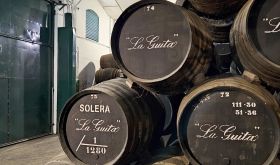From €9.90, $15, £12.50
Malbec from Argentina has featured no fewer than 15 times in our wines of the week, yet this is the first instance of the variety from its homeland in south-west France. It even deigns to say as much on its attractive modern label, albeit in small print, and uses the M-word rather than the traditional local name, Cot.
Hardly the most radical move, yet a telling indication of the forward-thinking attitude of Julien Ilbert, the winemaker at Château Combel-La-Serre. This brand has existed since 2005, although his family have grown grapes in the region since the very beginning of the 20th century. Julien had the vision of making his own wine from his own fruit, which was previously sold to a co-operative.
Ten years on, and the wines are imported by Louis Dressner Selections in the USA and Red Squirrel Wine in the UK, which are two accolades in their own right (you can read an entertaining profile of Julien Ilbert on the Dressner website). I tasted the 2014 and 2015 vintages at the recent Red Squirrel portfolio tasting, and was impressed by the entire Combel-La-Serre range.
There were five cuvées on show, all made from 100% Malbec. Le Pur Fruit de Causse 2016 is a youthful vin de soif style with brilliant acidic lift, bright black fruit and lovely violet scent. The name refers to the causse limestone soil on which his Malbec grows. La Vigne Juste Derrière Chez Carbo 2016 was served lightly chilled, as befitting its style, which is made by carbonic maceration to give very fine, gulpable tannin as well as raw red cherry fruit. Au Cerisier and Les Peyres Levades are two bottlings from single plots which are both more ambitious in substance and, inevtiably, price. They are excellent examples of aromatic power without overripeness that have the structure and intensity to age brilliantly.
But it was the main estate cuvée, Chateau Combel-La-Serre, which hit the sweet spot for me. The 2014 vintage has a lovely herby character that reminded me of the Rhône garrigue, as well as light acid and refreshing black fruit which gives the sort of thirst-quenching deliciousness that makes your glass un-put-downable. However, I marginally preferred the 2015, which had the same drinkability but more heft and weight on the palate, and which I think will improve in bottle for up to six years.
Both are 12.5% alcohol, which is a far cry from the more alcoholic and heavyweight versions that are the norm in Argentina, and indeed offers a very different style to the old-fashioned expectation of Cahors as rustic, tannic, 'black wine'. To drink this, then, is to challenge your preconceptions of Malbec in the most delicious way possible!














